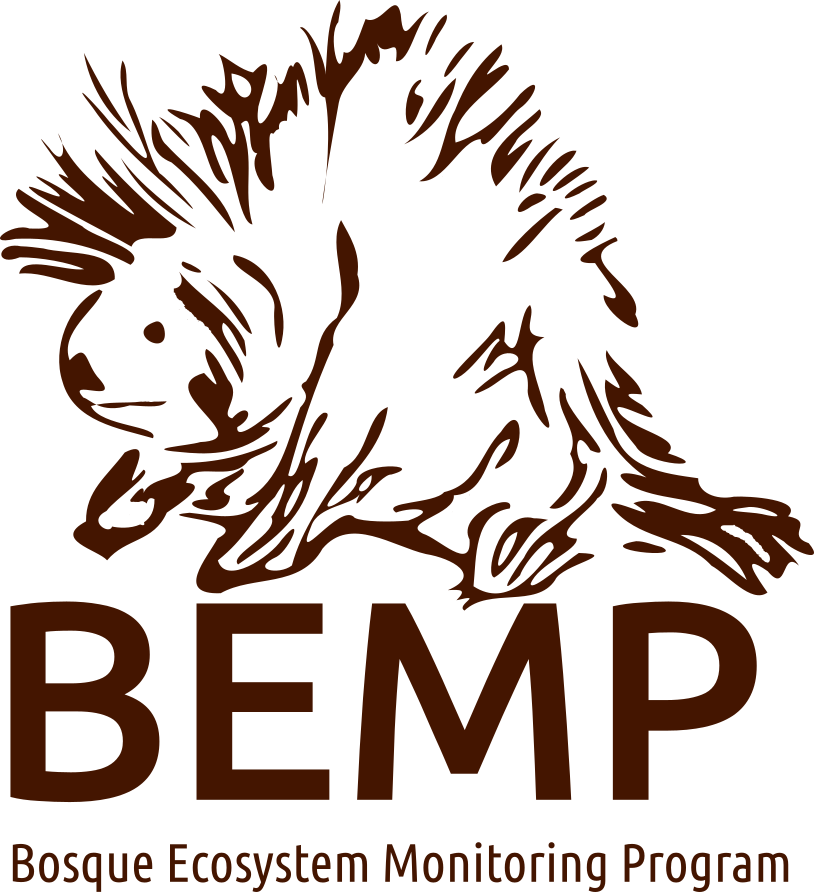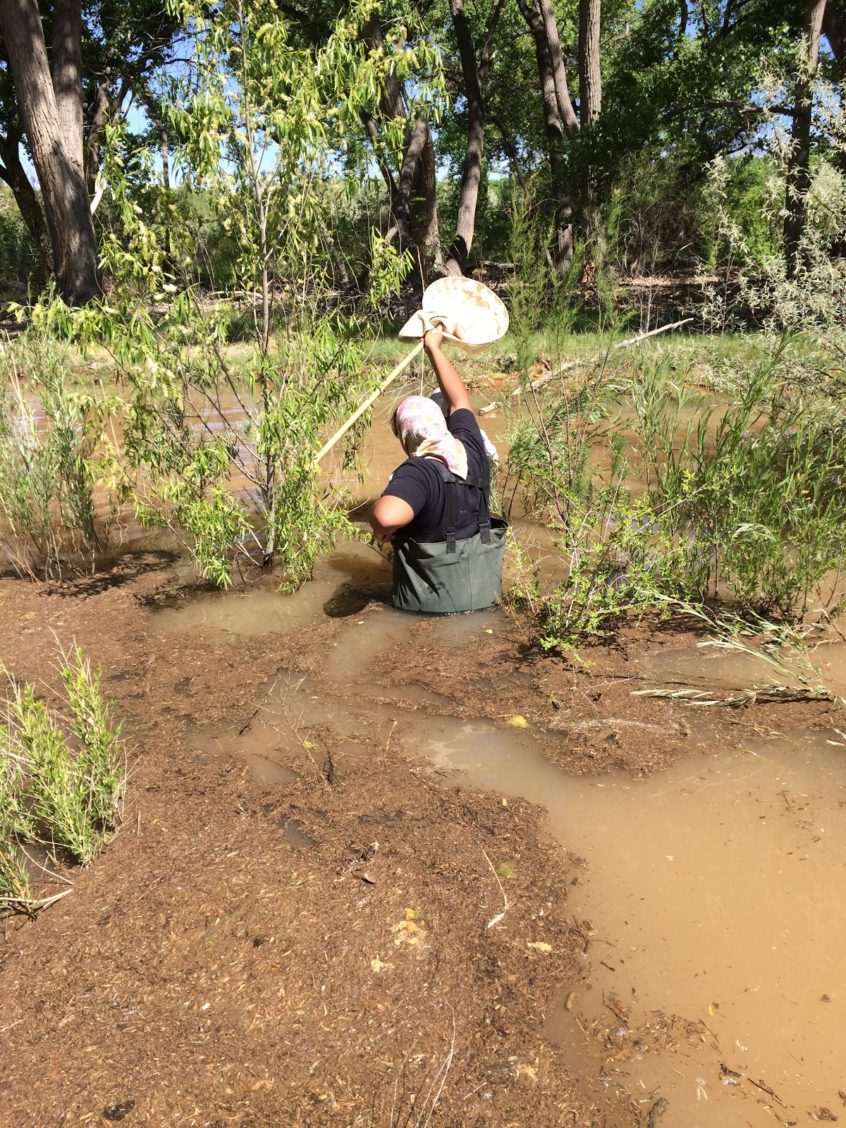What an exciting summer it has been smacking salt cedar trees with an insect net! Why is BEMP smacking trees? BEMP interns Ivan Robles and Keara Bixby spent their 2017 summer in search of the tamarisk leaf beetle (TLB), an introduced biological control for the non-native saltcedar tree also known as a tamarisk or Tamarix spp.. This is the fourth year that BEMP has been collecting this data to track the geographic distribution and abundance of the TLB and other non-native arthropod specialists that inhabit saltcedar trees.
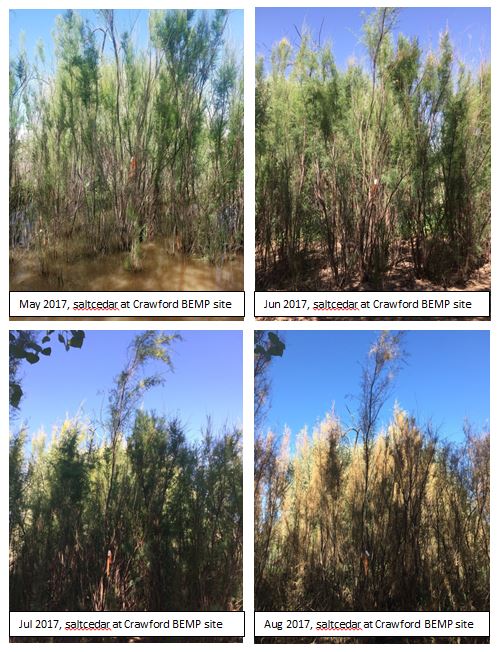
The tamarisk leaf beetle (TLB) was first introduced in 2004 up in Utah and later in Texas and Arizona in an attempt to curb monocultures (or dense single species stands) of saltcedars that line southwestern rivers. The beetles spread quickly and now range from Montana to Mexico and California to Texas. While the TLB is a saltcedar obligate, meaning it only eats saltcedar leaves as both larvae and adult beetles, the intention behind the TLB introduction was not to entirely wipe out saltcedar, but to eliminate some of the population to allow regrowth of the native riparian plants like willows and cottonwoods.
BEMP tracks TLB presence in saltcedars along the Rio Grande in New Mexico for several reasons. First, monitoring the population gives us the opportunity to understand whether the TLB are fulfilling their herbivorous ecological role and eating the leaves off the salt cedar to a degree that causes some tree mortality. Part of the fun in ecology is that we can never truly predict what the consequences will be from these biotic interactions, which is why it remains so important to study them. Secondly, BEMP wants to track the intensity of leaf loss, or defoliation, caused by the TLB. We estimate defoliation intensity in ten percent increments, looking for evidence of both brown and yellowing leaves, tracking the beetle’s consumptive progress through monthly repeat photography of each sample tree. This data is important because defoliated saltcedar, with its dry and brittle branches, can act as a ladder fuel. During a fire these defoliated trees can help spread fire into the cottonwood canopy, and the bosque is not a fire-adapted ecosystem.
We also want to understand how the beetles’ defoliation might impact other creatures like the southwestern willow flycatcher, an endangered bird species that uses saltcedar for nesting. Without leaves on the saltcedar trees (i.e. at the height of defoliation, usually late-summer), the bird has a difficult time protecting its eggs and young from the extra exposure. The heat from the New Mexico sun in summer months is also no longer blocked by the saltcedar’s canopy, further negatively impacting flycatcher populations.
BEMP looks at the tamarisk leaf beetle population ebbs and flows from May-August. Additionally, during this sampling window, we monitor for other saltcedar specialists like the splendid weevil and the tamarisk leafhopper; both species were likely accidentally introduced along with the saltcedar ~150 years ago. BEMP looks at the predators of all saltcedar defoliators, like spiders and ants, in order to glean more about predator-prey interactions. 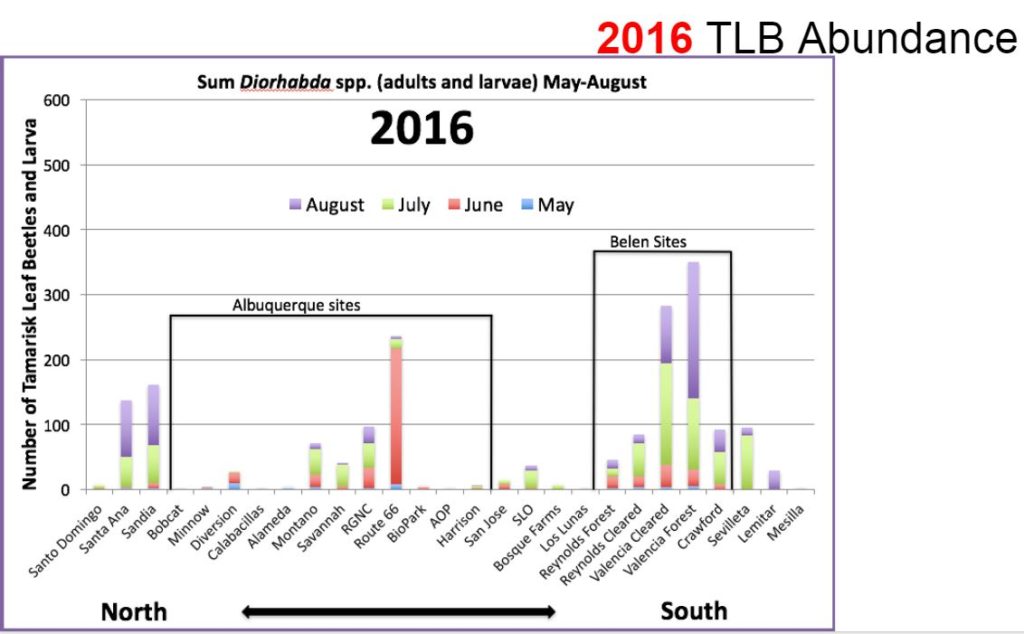
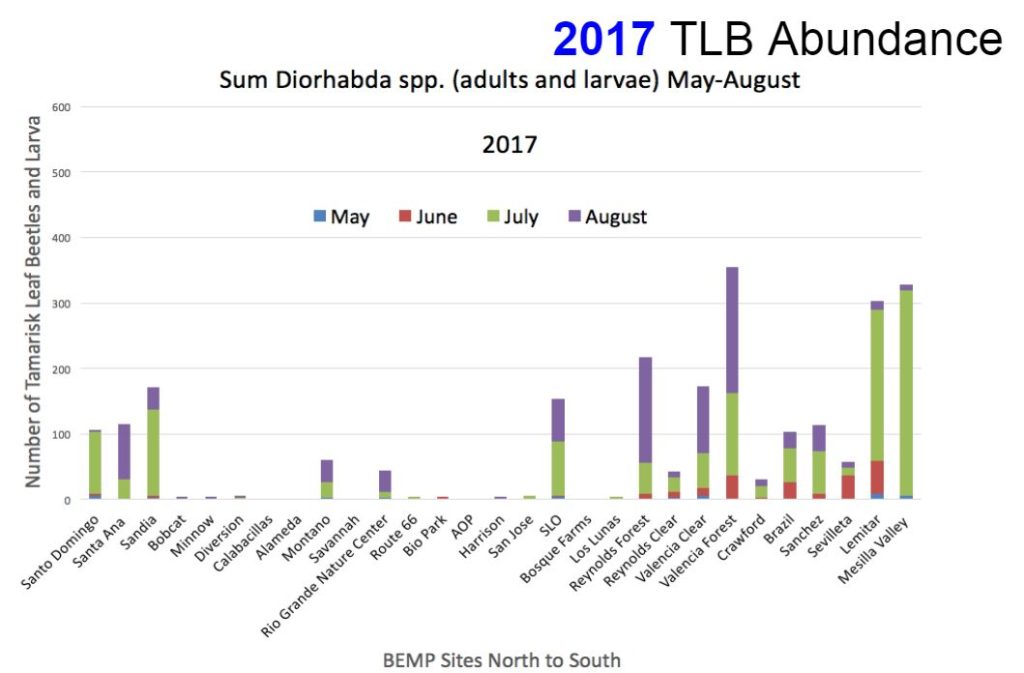
Data from TLB monitoring, in conjunction with BEMP’s other data sets like litterfall, can tell us when the saltcedar leaves are falling and what the total loss in biomass is for a given BEMP site. This helps us understand how the bosque is changing over time and with all of our different data sets (precipitation, groundwater, etc.), we can hopefully get a profound understanding of this insect and how it relates to our bosque.
BEMP has witnessed a southward shift in TLB populations. Fewer beetles were found at northern sites (like Rt 66 in Albuquerque) as compared to previous years, and more of the beetles are found at our southern sites. In fact, this is the first time BEMP has seen TLBs in the Mesilla Valley Bosque State Park, our most southern site allthe way in Las Cruces. We have lots of follow up questions after this year’s monitoring efforts. For example: why are the TLB moving southward? Or are they? Could the southern beetles be an entirely different species coming up the Rio Grande from Texas? With the help of BEMP staff and students in the coming years, we can tackle some of these questions about the wonderful ecosystem interactions happening right in our own backyard.
Blog Post by Keara Bixby, Tamarisk Leaf Beetle Summer Intern 2017 and Audrey Kruse, Education Coordinator. Image above of Ivan Robles in May 2017, at the flooded San Jose BEMP site.
